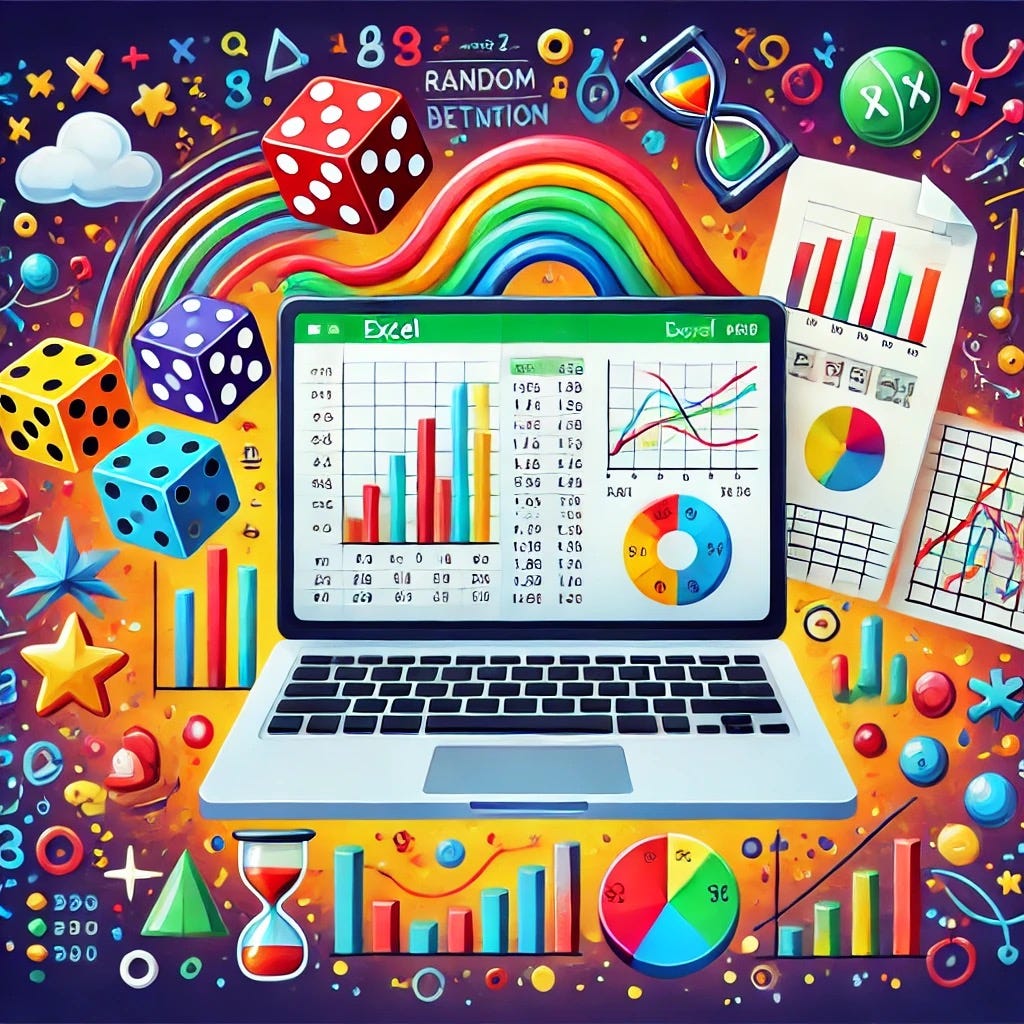🎲 Mastering Probability with Excel: Your Cheat Sheet to Predicting the Future 🌟
Probability is the science of turning uncertainty into insight. From guessing the weather 🌧️ to estimating the odds of winning a bet 🃏, probability is everywhere. The best part? You don’t need a PhD in statistics to get started. With Excel as your trusty sidekick, you can unravel probabilities and make informed decisions—all while having fun!
In this post, we’ll dive into the magic of probability and show you how to use Excel’s powerful tools to calculate probabilities with ease. Let’s turn spreadsheets into crystal balls! 🔮
🌐 What Is Probability?
In simple terms: Probability = (Favorable Outcomes) ÷ (Total Outcomes)
Imagine flipping a coin 🪙. The chance of landing on heads is:
• Favorable Outcome = 1 (Heads)
• Total Outcomes = 2 (Heads + Tails)
Probability = 1 ÷ 2 = 50%
That’s it! Now let’s see how Excel takes this simplicity to the next level. 🚀
💻 Excel: Your Probability Wizard 🧙♂️
Excel is more than just rows and columns—it’s a treasure chest for probability calculations. Let’s explore how to unlock its potential.
🎲 1. Generating Random Numbers: Simulating Uncertainty
Excel’s random number functions let you roll dice, flip coins, or simulate any random event.
• RAND(): Generates a random decimal between 0 and 1.
• Example: =RAND() might give you 0.537. It’s like drawing a random number from a hat! 🎩
• RANDBETWEEN(): Generates a random whole number within a specified range.
• Example: =RANDBETWEEN(1, 6) simulates rolling a 6-sided die 🎲.
🎯 Fun Challenge:
Simulate 20 coin flips using RANDBETWEEN(0, 1). Assign 0 = Tails and 1 = Heads. Count how many heads you get. Ready to test your luck?
📊 2. Understanding Probability Distributions
Probability distributions show how outcomes are spread out. Excel has built-in formulas to handle the most common ones.
⚖️ a. BINOM.DIST: Binomial Distribution
This calculates the probability of a specific number of successes (like flipping heads) in a set number of trials.
Example:
What’s the probability of getting exactly 3 heads in 5 flips of a fair coin?
Formula: =BINOM.DIST(3, 5, 0.5, FALSE)
Result: 31.25% 🎉
📞 b. POISSON.DIST: Poisson Distribution
The Poisson distribution predicts the likelihood of events occurring in a fixed interval, like customer calls 📞 or email arrivals 📬.
Example:
If a call center gets an average of 8 calls per hour, what’s the probability of getting exactly 10 calls in an hour?
Formula: =POISSON.DIST(10, 8, FALSE)
Result: 12.67%
📈 c. NORM.DIST and NORM.INV: The Bell Curve
The normal distribution is the superstar 🌟 of statistics. It describes everything from test scores to stock prices.
• NORM.DIST: Calculates the probability of a value in a normal distribution.
• Example: What’s the probability of scoring below 85 on a test with a mean of 80 and a standard deviation of 10?
• Formula: =NORM.DIST(85, 80, 10, TRUE)
• NORM.INV: Finds the value corresponding to a specific probability.
• Example: What test score represents the top 10% of students?
• Formula: =NORM.INV(0.9, 80, 10)
Excel instantly gives you results—no complex calculations needed! 🎓
🌟 Why Excel + Probability = Pure Awesomeness
Excel transforms probability into an interactive experience. Want to simulate dice rolls? Predict the likelihood of customer orders? Analyze your test scores? Excel is your playground.
🏁 Quick Recap & Challenge
🔑 Key Takeaways:
1. Use RAND() and RANDBETWEEN() to simulate random events.
2. Master BINOM.DIST for trials with success/failure outcomes.
3. Explore POISSON.DIST for event frequencies in fixed intervals.
4. Embrace the elegance of the bell curve with NORM.DIST and NORM.INV.
🎯 Your Challenge:
Simulate rolling two dice 🎲 and calculate the probability of getting a sum of 7. Use Excel to run simulations and calculate probabilities. Share your results and insights in the comments!
With Excel, probability isn’t just numbers—it’s a fun and practical skill you can use every day. So, let’s keep exploring and learning—one probability formula at a time! 🚀


